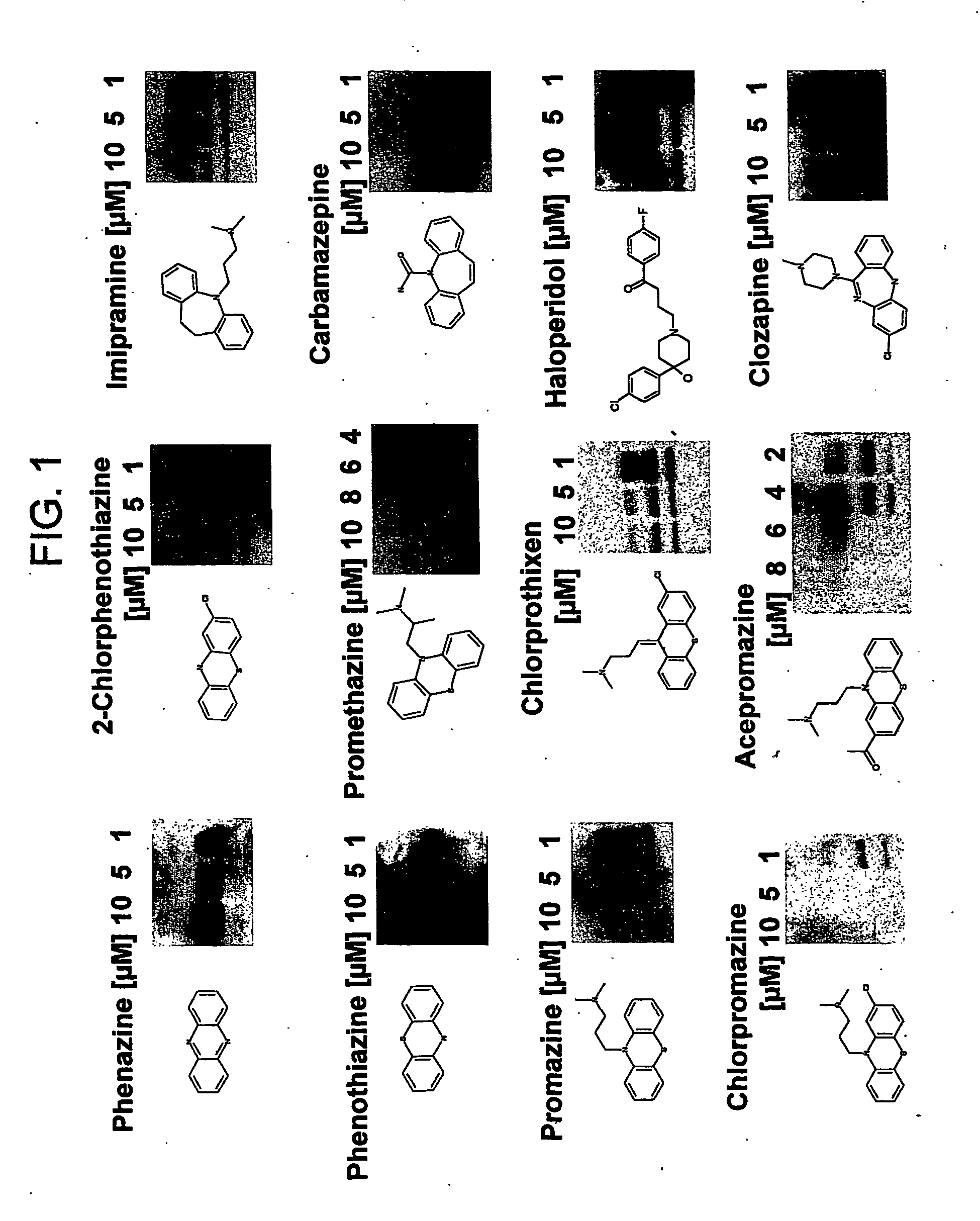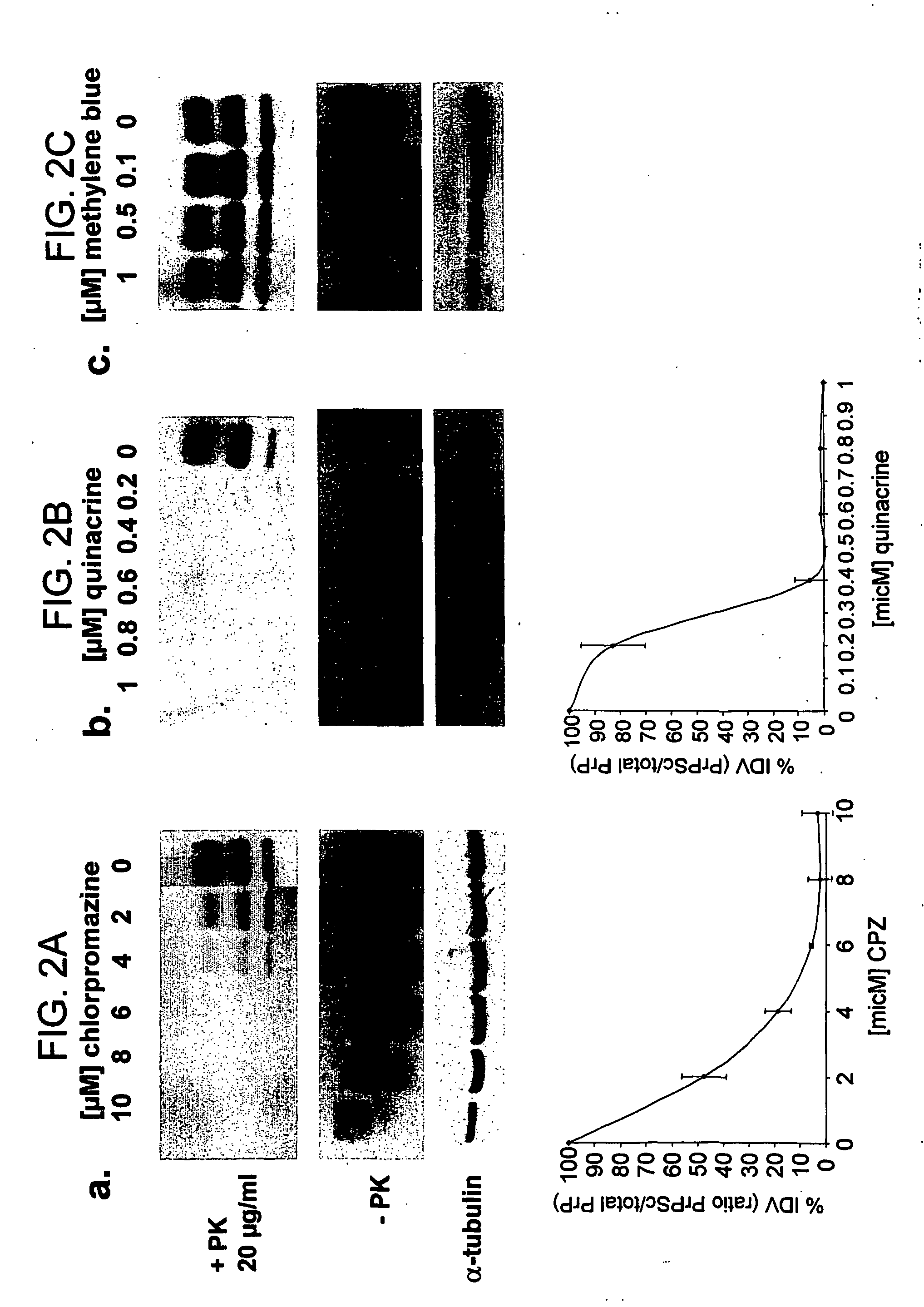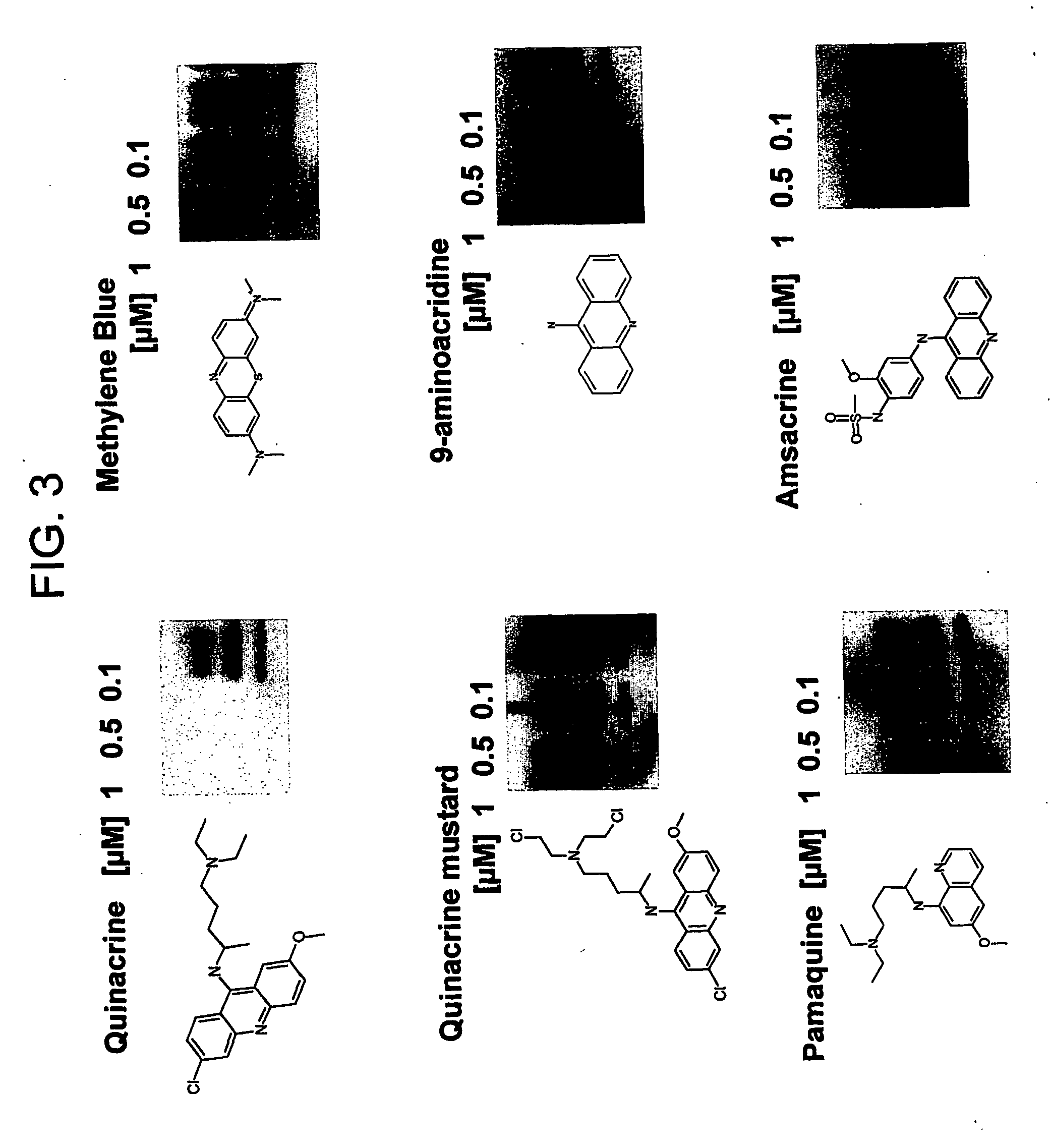Optically active compounds clearing malformed proteins
a technology of active compounds and malformed proteins, applied in the field of optically active compounds clearing malformed proteins, can solve problems such as unknowable cures, and achieve the effect of preventing prion infections
- Summary
- Abstract
- Description
- Claims
- Application Information
AI Technical Summary
Benefits of technology
Problems solved by technology
Method used
Image
Examples
example 1
In Vitro Experiments Of Permanently Scrapie-Infected Neuroblastoma Cells (Scn2a)
The formation and accumulation of PrPSc in mammalian cells can be inhibited by the administration of compounds with a tricyclic ring structure and a mid-ring side chain, such as, for example, phenothiazine derivatives and quinacrine.
Scrapie-infected mouse neuroblastoma cells were used as a model to study prion protein (PrP) formation and accumulation. Identically seeded N2a scrapie-infected neuroblastoma cells were infected with an RML strain of mouse adapted scrapie prions and subclones. A confluent 10 cm2 dish was split and cells were pipetted into a 60 mm2 dish of 4 ml MEM containing 10% FCS, penicillin-streptomycin and nonessential amino acids. The medium was exchanged every two days, together with the test compound. Cells were lysed (lysis buffer, 10 mM Tris pH 8.0, 150 mM NaCl, 0.5% NP40, 0.5% desoxycholate) on the seventh day having achieved an 80% confluency.
In brief, cell lysates were dig...
example 2
Differential Accumulation of Proteinase K Resistant PrPSc in ScN2a Cells Treated With, Two Optical Isomers of Quinacrine.
This experimental involves a comparison of two optical isomers of quinacrine specifically the dextrorotary and laevorotary isomers. The comparison clearly shows that the dextrorotary isomer (100% D) shown in FIG. 5A as the (+) optical isomer has substantially greater activity as compared to the (L) optical isomer (100% L). Within the example ScN2a cells are cultivated in MEM with 10% fetal calf serum and GlutaMax. For treatments, ScN2a cells were plated at about 2-3% confluency. Then, the indicated concentration shown in FIGS. 5A and 5B of 0-0.4 micromolar of optical (D) and (L) quinacrine isomers were added to the cell cultures. The cell media including quinacrine were changed every alternate day and treatment lasted for six days. Western blots of proteinase-K digested ScN2a cell lysates were incubated with (+)-and(−)-quinacrine and the results of such are sho...
PUM
| Property | Measurement | Unit |
|---|---|---|
| dextrorotary optical | aaaaa | aaaaa |
| body weight | aaaaa | aaaaa |
| optical | aaaaa | aaaaa |
Abstract
Description
Claims
Application Information
 Login to View More
Login to View More - R&D
- Intellectual Property
- Life Sciences
- Materials
- Tech Scout
- Unparalleled Data Quality
- Higher Quality Content
- 60% Fewer Hallucinations
Browse by: Latest US Patents, China's latest patents, Technical Efficacy Thesaurus, Application Domain, Technology Topic, Popular Technical Reports.
© 2025 PatSnap. All rights reserved.Legal|Privacy policy|Modern Slavery Act Transparency Statement|Sitemap|About US| Contact US: help@patsnap.com



